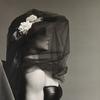Best of the Best on View in 'Painting Edo: Japanese Art from the Feinberg Collection' at Harvard Art Museums
- CAMBRIDGE, Massachusetts
- /
- February 05, 2020
Beginning February 14, 2020, the Harvard Art Museums present Painting Edo: Japanese Art from the Feinberg Collection, a special exhibition of more than 120 of the finest works from the preeminent collection of Robert S. (Harvard class of 1961) and Betsy G. Feinberg; the exhibition runs through July 26, 2020.
Painting Edo offers a window onto the supremely rich visual culture of Japan’s early modern era and explores how the Edo period (1615–1868), and the city of Edo (present-day Tokyo), expressed itself during a time of artistic renaissance. A striking array of paintings in all the major formats will be on display—hanging scrolls, folding screens, sliding doors, fan paintings, and woodblock-printed books, among others—from virtually every stylistic lineage of the era, telling a comprehensive story of Edo painting on its own terms.
“Painting Edo is one of the largest exhibitions ever presented at the Harvard Art Museums—and fittingly so, since the Feinberg Collection is one of the largest gifts of art ever promised to this institution,” said Martha Tedeschi, the Elizabeth and John Moors Cabot Director of the Harvard Art Museums. “We are immensely grateful to the Feinbergs, whose great care and vision will ensure that the beauty and material ingenuity of these works reach viewers today and for generations to come.”
Robert S.and Betsy G. Feinberg generously promised their collection of more than 300 works of Japanese art to the Harvard Art Museums in 2013. Judiciously assembled over nearly fifty years, the collection—the finest private collection of Edo period Japanese painting in the United States—offers an exceptional opportunity to explore continuities and disruptions in artistic practice in early modern Japan. The museums’ stewardship of the collection ensures access by students, faculty, scholars, and the public, and allows for teaching, research, and further documentation of these important works.
The Feinberg Collection is notable not only for its size and remarkable quality, but also for its comprehensiveness. It comprises representative paintings from virtually every stylistic lineage of the era: from the gorgeous decorative works of the Rinpa School to the luminous clarity of the Maruyama-Shijō School, from the monochromatic indexes of interiority of so-called Nanga, or Southern School, painting to the actors and courtesans of the pleasure quarters depicted inukiyo-e, to the inky innovations of the so-called eccentrics.
A complete catalogue of the Feinberg Collection will be published by the museums in late Summer 2020.
Over the last five years, since the museums reopened in 2014, select objects from the Feinberg Collection have been on display in extended thematic installations in the East Asian gallery on Level 2. This is the first time the museums mount a single exhibition across all four spaces. Visitors are greeted by Tani Bunchō’s Grasses and Moon (1817), a large painting that encapsulates the Japanese tradition of moon-viewing, before being immediately enveloped by Sakai Hōitsu’s Birds and Flowers of the Twelve Months (c.1820–28), a stunning group of 12 hanging scrolls that together create a paradisal garden in which all the seasons flower simultaneously. From this introductory gallery, visitors are encouraged to wander at will to discover the major schools and styles of painting.
“The Feinbergs have collected so carefully and with such dedication over the years that they have formed a truly comprehensive collection,” said curator Rachel Saunders. “That is particularly significant for us as a teaching museum because it allows us to look at the whole gamut of Edo painting within the exhibition, including virtually every major lineage and painting format.”
Learn more and view a slideshow of objects here.The museums invite visitors to use #PaintingEdo and #HarvardArtMuseums to tag their posts on social media platforms.
Painting Edo, organized by the Harvard Art Museums, is co-curated by Rachel Saunders, the Abby Aldrich Rockefeller Curator of Asian Art at the Harvard Art Museums, and Yukio Lippit, the Jeffrey T. Chambers and Andrea Okamura Professor of History of Art and Architecture at Harvard University. The exhibition will be on view exclusively at the Harvard Art Museums; an illustrated publication by Saunders and Lippit accompanies the show.




10270x400_c.jpg)


100x100_c.jpg)







![Peter Paul Rubens (Flemish, 1577–1640), After Titian (Tiziano Vecelli) (Italian [Venetian], c. 1488–1576), Rape of Europa, 1628–29. Oil on canvas, 71 7/8 x 79 3/8 in. Peter Paul Rubens (Flemish, 1577–1640), After Titian (Tiziano Vecelli) (Italian [Venetian], c. 1488–1576), Rape of Europa, 1628–29. Oil on canvas, 71 7/8 x 79 3/8 in.](/images/c/e2/2e/Jan20_Rape_of_Europa100x100_c.jpg)






